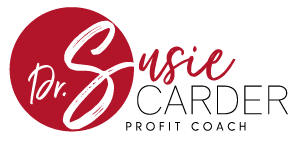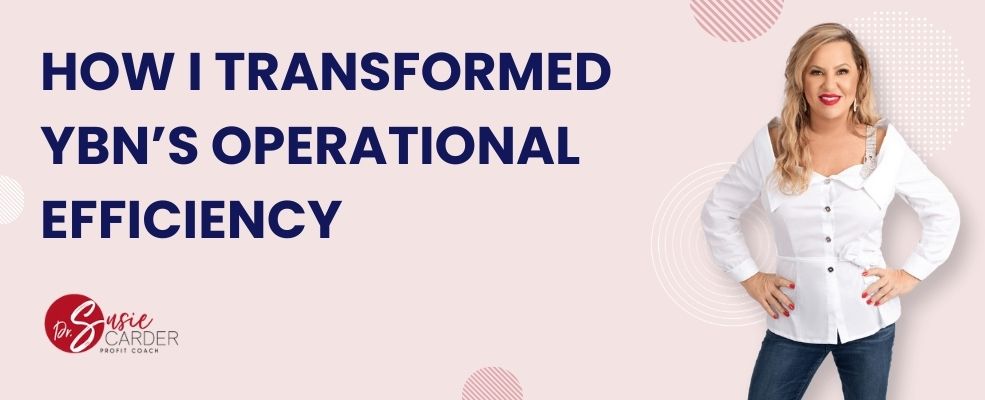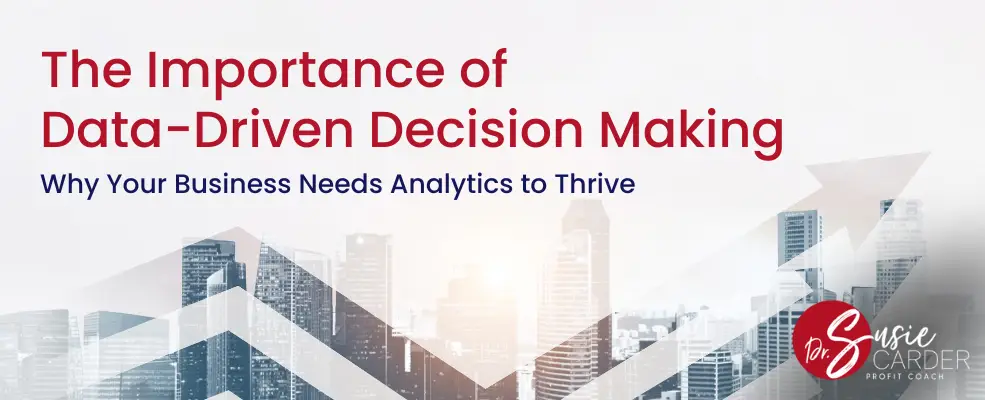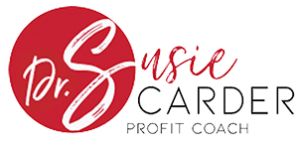I have always been an advocate for only marketing to your qualified ideal clients. This starts with product positioning.
REAL LIFE EXAMPLE
For years Marketers have told us to build our list, get people on our list and the money is in the list. The reality is yes, building your list is important, but what I found is many people on my list couldn’t afford me. I got more objections than buyers! No one has time for that!
As you grow, your avatar changes so each campaign, each time you finish a course or a consulting client, reevaluate. Ask yourself, is this still the right client? Remember all money isn’t good money, the good money is they love and adore you. The good clients do what you say and more importantly, pay you!
Product Positioning: Attracting and Retaining High-Value Clients
Imagine your amazing and innovative product goes unnoticed while a competitor with a not-so-great product sees huge sales. I saw this when I went to a Jazz concert. A little, unknown artist filled a theater of 2,997! On the other hand, a legendary Jazz musician couldn’t fill a 100-room hotel.
The difference isn’t the quality of the products; it’s how they’re presented. Product positioning is key to making your sales strategy work or fail. For professionals aiming to move up to higher earnings, getting product positioning right is a must. In this detailed guide, I’ll explain the important idea of product positioning. This isn’t just theory; it can transform your business strategy.
Introduction to Positioning: The Lighthouse in the Storm of Choice
Product positioning is how you show your product to stand out and attract customers. Simply put, product positioning is how a brand’s product is viewed in the mind of its customers. So for the new Jazz artist, he was positioned as the new up-and-coming, the next Charlie Parker! Effectively positioning your products or services is key to boosting profits. This holds true whether you’re selling a product, a service, or both.
Why Positioning Matters
How customers perceive you in a crowded market is crucial for success, making the difference between gaining loyal customers or being ignored.
Effective positioning elevates you above the noise of competing products and makes your offering stand out. It creates a unique space for your product in the minds of consumers, giving you an advantage when it comes to influencing their buying decisions.
But more than that, strong positioning can also increase profits by allowing you to charge premium prices and attract high-value clients willing to pay for your product. I think as entrepreneurs we fall into the trap of pleasing everyone only to please no one! I know it’s scary to niche, but you will have more success tracking who you want but more importantly, you will eliminate the looky loos!
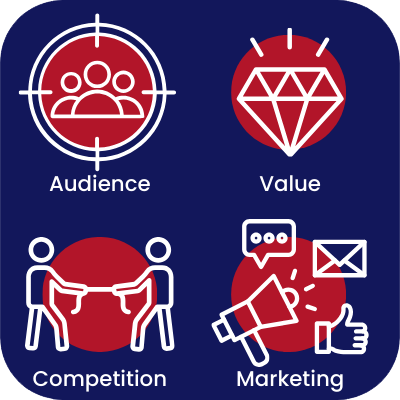
What Is Product Positioning?
Product positioning is the art of creating a specific place for your product in the target customer’s mind. I have had to learn this the hard way after pushing clients uphill to have them do the work. It was exhausting. Product positioning is strategic, intentional, and deeply influential.
We’ll cover four basics of product positioning:
- Your High-Value Target Audience
- Your Unique Value Proposition
- Analyzing the Competition
- Marketing
And here’s the real secret: Product positioning strategies are not about being everything to everyone. It’s about being something specific and valuable to a specific group.
REAL LIFE EXAMPLE
Product positioning took on a real meaning for me when I decided to change my title to Fractional COO from Executive Coach.
The title Fractional COO says something different. There is a sophistication in the title. Positioning is about finding your niche, standing out, and attracting high-value clients who are looking for exactly what you have to offer.
Your Target Audience
To position your product, you must speak to the hearts and minds of those most likely to buy it.
We have all had DREAM clients. Learn from them. Write down the attributes and qualities they have and duplicate them. More importantly, be willing to walk away when a prospect isn’t your ideal client.
Your target audience is the foundation of all your product positioning efforts. Be crystal clear on who they are, what they want, and how your product can fulfill their needs and desires.
REAL LIFE EXAMPLE
For me, identifying my ideal client boiled down to coachability. Did they have to support staff to help them get the projects and homework done? Were they willing to do whatever it took to make it happen? And I mean whatever.
If not, I don’t waste my time and their money!
Take the time to get to know your target audience, and target customers inside out.
How to Identify Your Audience
To find your target customers, use surveys, listen on social media, create buyer profiles, and analyze customer info. The more you learn, the better you can sell your product.
REAL LIFE EXAMPLE
When I worked as the Fractional COO for Keri Murphy, we got so granular on her ideal customer we identified what kind of music they like. This one thing brought us more leads because like attracts like.
Remember, the better you address what your audience wants, the more successful you’ll be at getting and keeping valuable clients.
Knowing your audience isn’t only about conducting market research; it’s about walking in their shoes, feeling their pain, and understanding their aspirations.
How to Know Your Audience
No positioning strategy is viable without a comprehensive understanding of your audience. You need to know their demographics, psychographics, buying habits, and more. This in-depth understanding is crucial for establishing a connection that resonates with their needs and preferences.
I know it sounds cliche, but when my clients rush through this process it’s a disaster in lead generation. Clarity is KING, we can’t be lazy and throw something together (trust me I have tried). Taking the time to identify will lead you to LOVE your work and love what you do versus dreading the client from hell.
How to Speak to Your Audience
Your brand voice is the tone and style in which you communicate with your audience. Your brand voice should convey confidence, enthusiasm, and persuasion and use YOUR specific language.
REAL LIFE EXAMPLE
I use the word Juicy when describing a win, or an exciting business opportunity. Now people will either love it or hate it. It’s ok, if they don’t love it, they aren’t my people. Use bold statements, rhetorical questions, imperative sentences, repetition, personalization, and testimonials to inspire action and maximize profit potential.
Chelsey Marie Clark, a branding specialist I hired, coined the title “Profit Coach.” My clients always referred to me as the MONEY, and a brand voice was born. Sometimes you have to hire an expert to find what is unique about YOU.
Speak directly to the needs, wants, and desires of your target audience.
Connecting with your target audience starts with a unique value proposition that echoes their deepest needs. It’s the compass that guides every marketing message, ensuring it hits the mark every single time. Be specific, be audacious, and back it up with the undeniable benefits that only your product or service provides.

Crafting Your Unique Value Proposition
Your Unique Value Proposition (UVP) shows how your product helps customers, what makes it special, and why they should pick you. It should shape your marketing and make your product unique among competitors.
Your UVP is the core of your positioning strategy and should be reflected in all your marketing efforts. Try different things on, see what feels right for you. Sometimes we cut and paste what we see the experts doing or what AI says and then it falls flat. I am an advocate for using AI as a tool but not to clarify your voice and messaging.
Crafting your Unique Value Proposition is a strategic move that empowers your product to dominate its space with unparalleled clarity and appeal.
Elements of a Strong UVP
A strong UVP includes four key elements. Here are some of mine:
- Clarity: Be crystal clear about the benefits of your product. Shout it from the rooftops: “I am the money!” Getting the results you deserve!
- Relevancy: Tailor your UVP to speak directly to the desires of your target market: “You asked, we delivered. Experience the difference today!”
- Differentiation: Point out what sets you apart: “Wealth is your Birthright” and “Money is all around you.”
- Proof: Back up your claims with evidence: “Our clients see an average of 25% increase in profit but have had as much as 300%!”
The UVP’s Role in Positioning
As the cornerstone of your positioning strategy, your Unique Value Proposition articulates the reason your product exists. When positioned correctly, your UVP magnetically attracts the customers who most need what you offer.
REAL LIFE EXAMPLE
When considering my UVP, I realized my clients were suffering. They weren’t making a profit. Well, profit is PLANNED. This one discovery shifted the money game for my clients.
Effective positioning takes time, effort, and constant refinement. But when done right, it can elevate your brand above the rest and connect you with high-value clients looking for exactly what you have to offer.
Tips for Creating a Compelling UVP
A compelling UVP is like a velvet hammer—it’s soft on the ears but packs a punch. Here are some tips to create a compelling Unique Value Proposition. Don’t be afraid to PUNCH!
- Identify what sets you apart: unique strengths, experiences, and values that distinguish you from others in your field or industry.
- Emphasize customer benefits: how a product or service meets the needs and desires of customers, showcasing the value it brings to their lives.
- Keep it concise and clear: use simple language, avoid jargon, and address the specific needs or pain points of your target audience.
- Continuously refine and adapt your UVP: conduct market research, gather feedback from customers, analyze competitors, and stay updated on industry trends.
Keep in mind, successful positioning relies on communicating boldly with a strong brand voice. Developing a distinctive value proposition is a crucial element of this puzzle, setting you apart and resonating with your target audience.

Analyzing the Competitive Landscape
Understanding where you sit in the marketplace relative to your competition is a mandatory step in positioning. It helps you identify gaps, leverage your strengths, and differentiate your brand in ways that matter to your audience.
REAL LIFE EXAMPLE
I realized there are a TON of coaches, Fractional COOs, and online business managers. But ME, I have built ten multimillion dollar businesses, two 10 million dollar businesses. I have taken a company public, and I have raised millions for myself and others. This is what sets me apart. It’s not theory, it’s rubber meets the road!
Importance of Awareness in Positioning
Knowing what your competitors are up to helps you figure out how to make your product stand out. By looking at what they do well and where they fall short, you can get ideas to improve your own marketing and make your product different.
Moreover, this analysis shows where the market is too crowded or very competitive. This highlights the need for new ideas and ways to be different. It gives you a chance to find new areas, meet needs that are not being addressed, and provide value in a way that connects with your target audience.
Study and analyze your competitors. Glean from them or emulate, but do not imitate. We can see a fraud coming a mile away! Learn from what they do right and wrong to improve your processes and make the most of what you’re good at. Be honest about the same for your business! This will help you make your product or service stand out and keep up with what your customers want.
Strategies for Differentiating
To stand out, consider price, quality, and service. But what matters, in the long run, are the deeper connections and RESULTS. If you are producing results, don’t be afraid to charge what you are worth!
Aim to understand customer emotions and fulfill their basic needs. Shared values based on ethics create strong relationships that last. Focusing on these aspects helps businesses create a distinctive selling point, setting them apart and leaving an impression on their audience.
Communicating Through Marketing: The Art of Storytelling
A marketing plan is the vehicle that transforms positioning into action. It takes a holistic approach to connect with customers and establish your product’s position in their minds. This is where your message evolves into their truth, shaping the product positioning statement.
Choosing Effective Marketing Channels
Using multiple channels is the best way to ensure your brand message stays the same everywhere. By using things like social media, content marketing, and ads, you can make your message stronger and show why your product is special.
Remember, you can create your content once and repurpose it many times. This way, your audience gets a clear and interesting view of your brand, which helps them learn more and get involved, leading to more success for your business. When I create Reels, my message stays the same, but the words change. I don’t follow a script, I speak from my heart and experience.
Crafting a Consistent Positioning Message
Effective product marketing is super important. One way to do this is by telling stories. Share real-life examples to show how your product makes a difference in people’s lives.
There’s a saying: speak to the ONE and you will speak to many. Don’t worry about being perfect, just share your message. I think the longer I do this the more willing I have to be vulnerable and real. I find when I share my mess in the message people resonate more with me, my message, and my brand.
Create a clear picture of how your product/service can solve problems or enhance experiences. We are either motivated by pain or pleasure. Make sure you are hitting both. Engage customers by highlighting how your product can transform their lives. This storytelling approach helps you connect with your audience and build trust in your brand.
So, use your storytelling skills to capture your customers’ attention. Tell a compelling story that personally resonates with them.

Aligning Positioning with Brand Image
To ensure your product fits well with your brand, make a smooth connection between them. This consistent brand image not only sends a clear message but also lets customers know that using your product matches your brand’s values.
Please take this one seriously, if you want to represent a high-end brand your personal brand, your personal image, has to represent that too. By focusing on the small things, you can make a complete experience, connecting with your target audience and boosting your brand’s image.
Ensuring Consistency in Every Aspect
From top-notch products to excellent customer service, everything should blend seamlessly to strengthen your product’s unique market position. Understand we will always have a breakdown, and I always say the bigger we play the bigger the breakdown. It’s vital for both inside and outside parties to fully grasp and support this positioning. This ensures a consistent delivery across all interactions, leaving a strong mark on your audience’s minds. It sets you apart from competitors and builds brand loyalty.
By aligning exceptional products and customer service, you solidify your product’s spot in the market. It’s crucial for stakeholders to understand and support this positioning. This guarantees a consistent delivery across all interactions, leaving a lasting impression. This separates you from competitors and fosters brand loyalty.
The Power of Visual and Verbal Identity
For a consistent brand image, it’s important to think about how you look and what you say. Your visual identity, like logos and colors, shows what your product is about. Your verbal identity, like how you talk and the words you choose, shapes your brand’s character and message.
Identities work like background music, setting the scene, and improving the brand experience. Just as a good soundtrack goes with a movie, a carefully made visual and verbal identity can help your product stand out in the market.
REAL LIFE EXAMPLE
Remember you are your brand’s biggest billboard. I learned early in my career that I had to invest in my wardrobe, hair, and makeup to attract my ideal client. Even today, 90% of my meetings are virtual, but I still have a strong visual. My hair is done, my make-up and my clothes are all in place. When people get on virtual meetings in casual environments, with their bed in the background, it’s unprofessional. Pay attention to these details, it can leave a lasting impression on your audience, building brand loyalty and making your product unique.
Encouraging Action with the Right Tone
When creating CTAs (Call to Actions), it’s important to use words that make people feel like they need to act fast and that they’ll get something good out of it.
Instead of just saying “Buy Now,” try phrases like “Start Your Journey Today” or “Join the Winning Team.” “Are you ready to get started? Let’s make you the money!” These phrases not only get people excited but also show them the benefits and cool things they can get.
Providing Resources for the Journey
To make your Unique Value Proposition (UVP) stand out and position your product well, think about giving useful resources like whitepapers, free downloads, or webinars.
Remember your clients respond to different messages so it can’t be one-and-done. We have several of these in play at all times! When you share these educational materials, you’re not just teaching potential customers about your product, but also boosting their trust in deciding to buy. This method keeps them engaged, leading them towards a purchase, which in turn helps your business grow and succeed.
Conclusion: A Position Worth Protecting
To sum up, becoming skilled at how to place your product isn’t only about sales or marketing; it’s about creating a brand that truly connects with you and then with your customers. By knowing your qualified avatar, developing a strong unique value proposition, studying your competitors, and communicating clearly, you’ll establish a strong market position that stands out from the competition.
Effective product positioning can propel your business toward achieving significant success. Solidify your place in the market by implementing these strategies with your own touch. This will help you establish a distinct presence.
Competition is always changing, so your strategy should evolve too. Keep evaluating, adjusting, and improving to stay ahead. Product positioning is not just about where your product is now, but where it’s going. Let’s work on this together. Your success is waiting.
